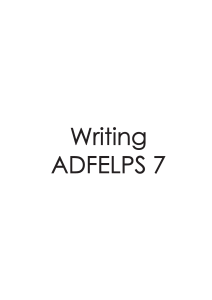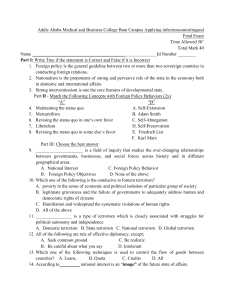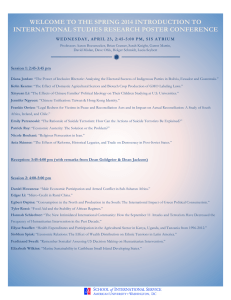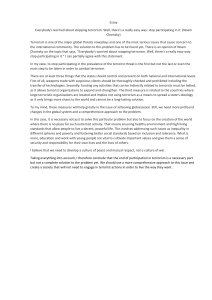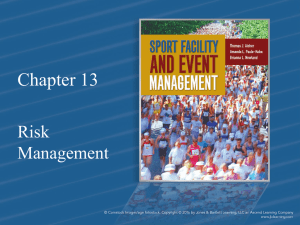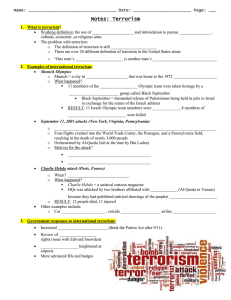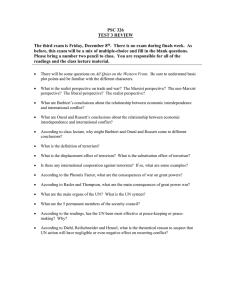Chapter 9: Political Forces
advertisement
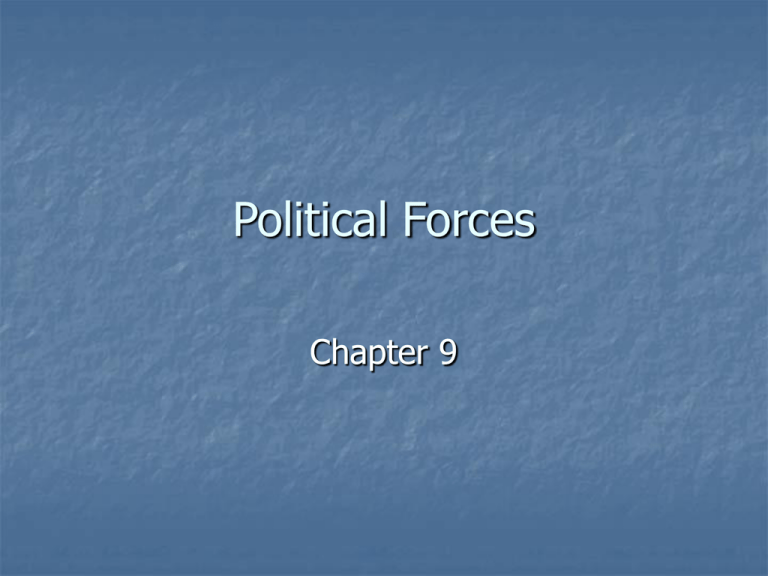
Political Forces Chapter 9 Ideological Forces Communism Who controls factors of production? Why did it fail? Capitalism Expropriation Confiscation Are any organizations government-owned? Socialism European socialism Developing countries Conservative v. Liberal Conservative Liberal Right wing Left wing Political advocacy groups Government Ownership Why? Five reasons Unfair Competition? Can lower prices Cheaper financing Government contracts Export assistance Can hold wages down Privatization “Transfer of public-sector assets to private sector, the transfer of management of state activities through contracts and leases and the contracting out of activities previously conducted by the state.” Examples 1985-2002: $525 billion assets privatized US privatizing? Example: Water in the UK Government Protection Gulf War Terrorism Italy September 11 Department of Homeland Security Other changes Other groups Government Protection Terrorism (cont’d) Kidnapping Columbia & Peru Pay the ransom? Countermeasures Cassidy & Davis International Training, Inc. Other terrorism Ethnocentrism Nuclear terrorism Chemical and biological terrorism Islamic fundamentalism Government Stability Government is stable if Maintains itself in power, or Its fiscal, monetary, and political policies are predictable and not subject to sudden, radical changes Unstable Lebanon Zimbabwe Traditional Hostilities Arab Countries – Israel Hutus & Tutsis Tamils – Sinhalese Sri Lanka Albanians, Bosnians, Croats, and Serbs Massacre Retribution Zaire Ethnic cleansing United Nations & NATO South Africa International Organizations United Nations Main functions Transnational Corporation Division UN Conference on Trade & Development IMF GATT/WTO OPEC EU OECD Country Risk Assessment “Bank or business having an asset in or payable from a foreign country or considering a loan or an investment there, evaluates that country’s economic situation and policies and its politics to determine how much risk exists of losing the asset or not being paid.” Country Risk Analysis Five Types of Risk Information Content Nature of Business Length of Tome Required Who does a CRA? Lessons of International Debt Crises External shocks occur to developing countries Economic policies impact default Need substantial growth Social and potential political costs of development Ripple effects
